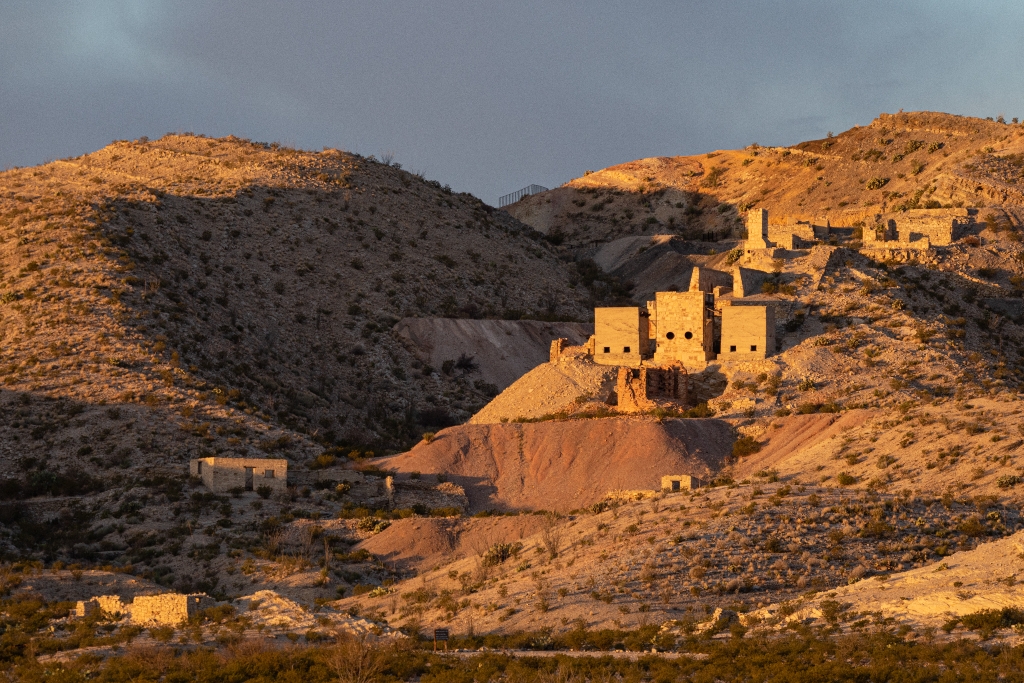
The Mariscal Mine once bustled as the center of the Big Bend quicksilver mining economy. From 1900 to 1943, Mariscal Mine produced 1,400 seventy-six pound flasks of mercury - nearly one quarter of the total produced in the United States! Now deserted, the mine and surroundings once provided the people who lived here an income, a community, and a home.
A visit to Mariscal Mine conjures up images of hard-working men, women, and machines. With a little imagination, you can get a feeling for the work of these early pioneers and their contributions to Big Bend's rich human history. The remains of the mine stand today as a symbol of a time when "quicksilver was king" and as a vivid reminder of the cycle of human activities and nature's reclamation.
The mine is located on the northern end of Mariscal Mountain, deep in the interior of Big Bend National Park. Easiest access to the area is via the River Road east, which begins just west of Rio Grande Village. The mine is located approximately 22 miles down the gravel road. This is a remote and primitive dirt road. A high clearance vehicle (with at least 8 inches of clearance or more from the lowest point of the frame, body, suspension, or differential, to the ground) is always required, and after any rains, the road will require four-wheel drive. Always check with a park ranger for current road conditions before setting out. Allow at least one-half day for this excursion.
Safety Precautions and Regulations
While exploring the area, remember to leave all objects in place in the park; collecting is prohibited. Because they are old, fragile, and unsafe, please stay off of the remaining structures. Avoid handling the bricks of the Scott Furnace and condensers or handling mine tailings as they may contain poisonous concentrations of mercury. Finally, be careful around the mine shafts; although most are fenced, they are vertical and deep, and other unfenced shafts may exist in the area.
Learn more about the Mariscal Mine:
Is there something we missed for this itinerary?
Itineraries across USA


















































